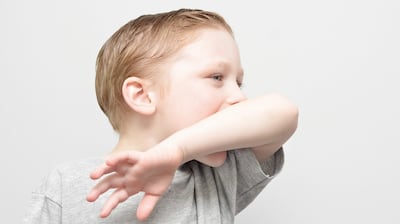When you feel a sneeze or a cough coming on, covering your mouth prevents the spread of infectious germs.
You probably knew that.
But the way you cover up also matters, and there are plenty of people who haven’t yet heard the consensus guidance of health officials – if no tissue is available, you should aim into your elbow, not your hand. Even if that means breaking a long-held habit.
“If somebody sneezes into their hands, that creates an opportunity for those germs to be passed on to other people, or contaminate other objects that people touch,” said Dr Vincent Hill, chief of the waterborne disease prevention branch of the US Centers for Disease Control and Prevention.
Germs are most commonly spread by the respiratory droplets emitted from sneezing and coughing. When they land on your hands, they’re transmitted to things like doorknobs, elevator buttons and other surfaces the people around you are likely to also touch.
This isn’t just us nagging. Sneezing and coughing into your arm has become the standard suggestion of not just the CDC, but also many health organisations around the world.
However, you might be forgiven for not knowing that, since the suggestion is relatively new.
The guidance has become official only in the last 10 to 15 years, Hill said.
While adults may have missed the advice, children, however, are frequently taught in school the proper way to cough or sneeze – sometimes referred to as the Dracula cough, since it makes you look like the count covering up with his cape.

Mary Anne Jackson, a professor of pediatrics at the University of Missouri-Kansas City School of Medicine, said the term "cough etiquette" first turned up in 2000, and she traced the suggestion to sneeze into your arm to 2003, when SARS fears were widespread. It gained further prominence in 2009, when the H1N1 swine flu pandemic struck.
To be clear, the maneuver doesn’t eliminate all risk, even if it’s the best tactic available. Studies have shown that even masks can’t prevent all droplets from becoming airborne, Jackson said.
But anything to reduce the amount of flying particles helps.
And health officials keep coming back to a drum that can never be beat enough: Make sure you consistently wash your hands.
“Hand washing is one of the most important things people can do to keep healthy,” Hill said.




